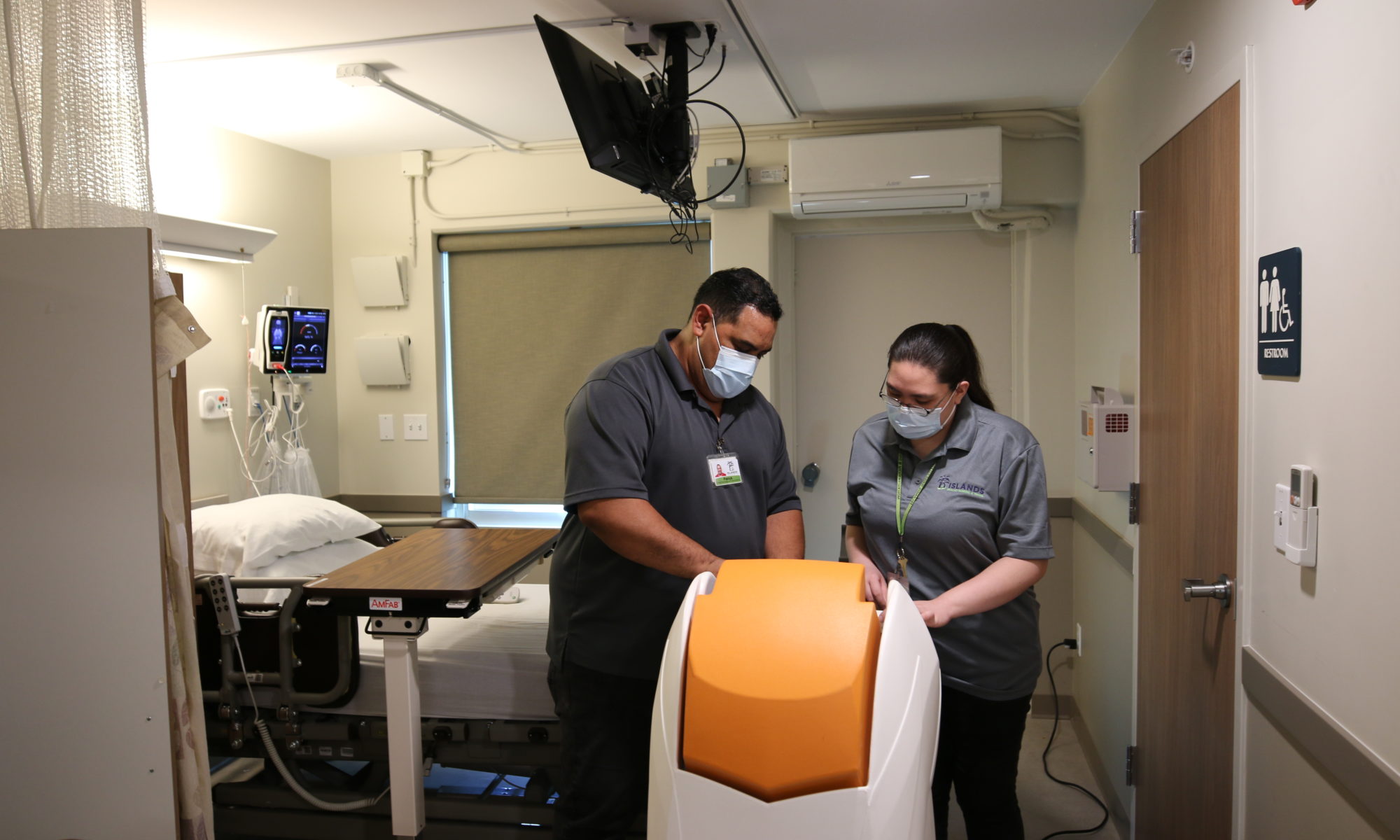The new role of tech in disinfection and cleaning

Pandemic changing awareness and adoption
By Medline Newsroom Staff | February 9, 2021
More facilities across the continuum are starting to see more available dollars free up to step up infection prevention and cleaning strategies due to the pandemic.
One increasingly popular option is high tech UV equipment that can complement, and add a powerful disinfecting finish to, any existing EVS cleaning process.
UV technology is changing the cleaning game. Here’s what Megan Henken, vice president of product management within Medline’s Environmental Services division, says to consider as you assess what’s right for you and your team.
Strengthen, not replace
Most administrators and EVS staff understand that UV technology isn’t meant to replace people. Doing so would be impossible, says Megan Henken. “There’s two steps to cleaning. The first is to remove the soils from surfaces, which a UV device could never be able to do. The second step is to apply disinfection to the surfaces, and that’s where these new options come in.”
Go beyond “surface” level
Different viruses transmit in different ways, and present unique cleaning challenges. C diff spores, for example, often reside on floors while Tuberculosis bacteria and SARS CoV-2, the virus that causes COVID-19, are known to linger in the air. The Solaris Lytbot emits UVC energy into the environment quickly and effectively using high-frequency flashes of UV light, which helps to rapidly destroy vegetative and spore-forming pathogens. The device is meant to be used after EVS staff have completed their surface cleaning of a room, and its UV light is so powerful that no personnel or patients can be present in a room while it works.
SARS CoV-2, the virus that causes COVID-19, lingers in the air and is small. Research shows the virus is smaller than 0.3 microns, so small it can pass through traditional HEPA filters without getting caught. Scientific Air combines filters capable of capturing particles smaller than 0.3 microns large with UV technology to kill up 99.9995% of airborne pathogens it encounters. Another feature of the Scientific Air device is that it can be run while EVS staff or patients are in a room.
Plan for success
To get the most out of this technology, administrators need to think through how any new equipment will be best utilized. How many devices would your facility need to truly integrate UV disinfection into the regular cleaning process? Most care settings are too large to share a single device, so an investment of that size may ultimately be underutilized. How large are the rooms being disinfected? Since devices are tested in chambers of varying sizes, compare the size of the rooms at your facility with the test chambers of individual devices. That can help ensure the technology will be a good fit for needs of specific facilities.
Popular across care settings
Hospitals were the first to adopt and invest in this kind of disinfection technology, but increasingly long-term care facilities, and even universities, are making similar investments.
“This technology is catching on across the care continuum,” says Henken. “Institutions are investing depending on their particular needs. For example, one east coast university purchased dozens of UV air cleaning devices in preparation for bringing students back on campus.”
Examples like this one further goes to show that while protecting the safety and health of individuals remains the number one priority, the ways of doing so continue to evolve.
See how Medline support EVS strategies across the continuum of care.
Medline Newsroom Staff
Medline Newsroom Staff
Medline's newsroom staff researches and reports on the latest news and trends in healthcare.
